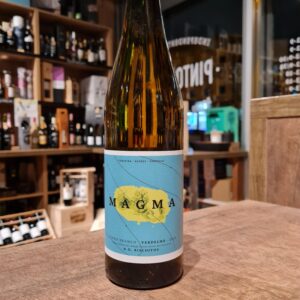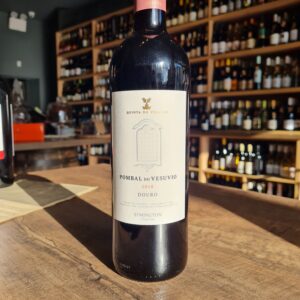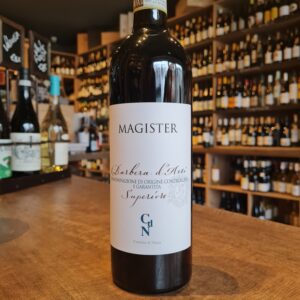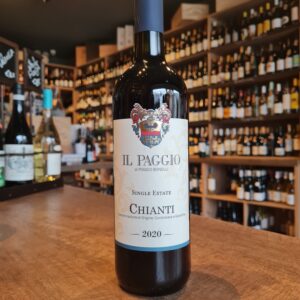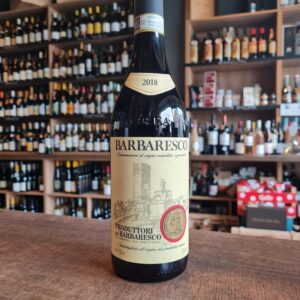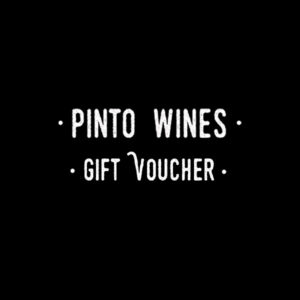-
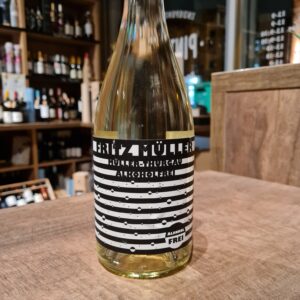 Non-alcoholic wine born in 2009 from a bubbly guy with old roots and modern tastes. Invariably well-dressed, he captures the world’s attention with his ranges of Non-Alcoholic wines in Frizzante style. Guido Walter and Jürgen Hofmann put their heads together. The German answer to frizzante had to be fresh and fruity, uncomplicated and affordable. A semi-sparkling wine that begins a carefree evening and lets you continue dancing late into the night. What began as an experimental small edition soon spread its wings and took flight. Suddenly it could be found at every party and could be seen winning design awards and notes of good taste. Everyone wants Fritz Müller. Refreshing, fizzy and frivolous: completely uncomplicated, the non-alcoholic Fritz Müller offers light-footed fun and fruity enjoyment. Vinified from the same grapes as the Fritz Müller semi-sparkling wine, this version entices sipping one or two glasses more without regret the next day. Wonderfully pure, it is best enjoyed chilled to 8°C, or as an ingredient in virgin cocktails. Guilt-free wine ;)
Non-alcoholic wine born in 2009 from a bubbly guy with old roots and modern tastes. Invariably well-dressed, he captures the world’s attention with his ranges of Non-Alcoholic wines in Frizzante style. Guido Walter and Jürgen Hofmann put their heads together. The German answer to frizzante had to be fresh and fruity, uncomplicated and affordable. A semi-sparkling wine that begins a carefree evening and lets you continue dancing late into the night. What began as an experimental small edition soon spread its wings and took flight. Suddenly it could be found at every party and could be seen winning design awards and notes of good taste. Everyone wants Fritz Müller. Refreshing, fizzy and frivolous: completely uncomplicated, the non-alcoholic Fritz Müller offers light-footed fun and fruity enjoyment. Vinified from the same grapes as the Fritz Müller semi-sparkling wine, this version entices sipping one or two glasses more without regret the next day. Wonderfully pure, it is best enjoyed chilled to 8°C, or as an ingredient in virgin cocktails. Guilt-free wine ;) -
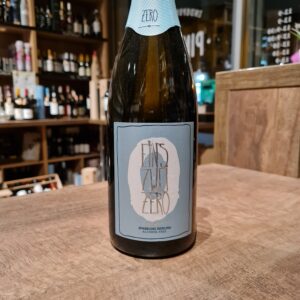 Since taking over the family estate in 1985, Johannes Leitz has made it his life’s work to return the vineyards of the Rudesheimer Berg to their former glory as one of the finest in Germany. 35 years later and Leitz wines are now recognised among Germany’s best. Using a newly-patented cool vacuum distillation process, Johannes has created the world’s best tasting zero alcohol wines. At first the very idea of Alcohol Free wine seemed a taboo. But over the years, with the winemaking skills improving and more and more better Non-Alcoholic wines being produced, slowly everyone is getting used to it. This is not sparkling grape juice. This is wine where the alcohol has been removed through a technical process. So, maybe you’re going for a dry January, or you’re expecting, or on medication. Here is a very nice option for that special dinner.
Since taking over the family estate in 1985, Johannes Leitz has made it his life’s work to return the vineyards of the Rudesheimer Berg to their former glory as one of the finest in Germany. 35 years later and Leitz wines are now recognised among Germany’s best. Using a newly-patented cool vacuum distillation process, Johannes has created the world’s best tasting zero alcohol wines. At first the very idea of Alcohol Free wine seemed a taboo. But over the years, with the winemaking skills improving and more and more better Non-Alcoholic wines being produced, slowly everyone is getting used to it. This is not sparkling grape juice. This is wine where the alcohol has been removed through a technical process. So, maybe you’re going for a dry January, or you’re expecting, or on medication. Here is a very nice option for that special dinner. -
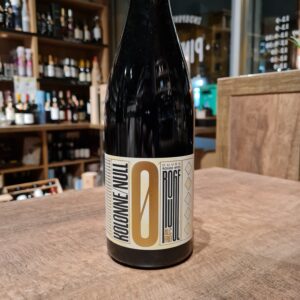 In the middle of the Spanish plateau "Meseta de Ocana" not far from Toledo, three friends founded their own winery in 1999: Margarita Madrigal, Alexandra Schmedes and Gonzalo Rodriguez. The revival of regional traditions became the basis of their way of working, which is characterized by the ecological cultivation of 35 hectares of native grape varieties and the extremely continental climate. Together with Alexandra, the first Spanish red wine, Cuvée Rouge No.2, was developed. This velvety, grippy taste makes it a must-drink on a barbecue evening, with risotto and pasta. The perfect non-alcoholic red wine for all those who love it wild and unbridled. Bring your Spain vacation home!
In the middle of the Spanish plateau "Meseta de Ocana" not far from Toledo, three friends founded their own winery in 1999: Margarita Madrigal, Alexandra Schmedes and Gonzalo Rodriguez. The revival of regional traditions became the basis of their way of working, which is characterized by the ecological cultivation of 35 hectares of native grape varieties and the extremely continental climate. Together with Alexandra, the first Spanish red wine, Cuvée Rouge No.2, was developed. This velvety, grippy taste makes it a must-drink on a barbecue evening, with risotto and pasta. The perfect non-alcoholic red wine for all those who love it wild and unbridled. Bring your Spain vacation home! -
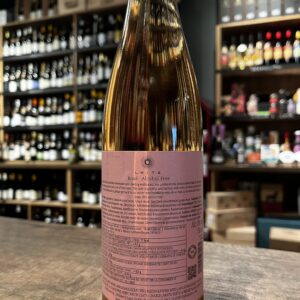
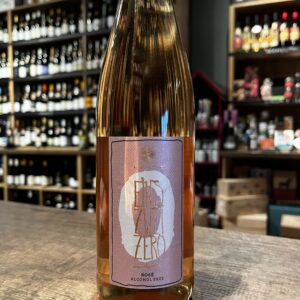 There are records linking the Leitz family to winemaking, dating all the way back to 1744. Johannes Leitz took over the winery in 1985 and since then has increased the estate from 2.9 hectares to the 40 hectares that we see today. He has always aimed to produce wines in an elegant style with pure fruitiness and great freshness, of the highest quality - and this includes his alcohol-free wines. Alcohol-free wine never will give the same depth, structure and weight as a wine with alcohol, but this is extremely close to it and it is simply an alcohol-free wine tasting wine. Impressive. We recommend to pair this wine with summer salads or different fruits.
There are records linking the Leitz family to winemaking, dating all the way back to 1744. Johannes Leitz took over the winery in 1985 and since then has increased the estate from 2.9 hectares to the 40 hectares that we see today. He has always aimed to produce wines in an elegant style with pure fruitiness and great freshness, of the highest quality - and this includes his alcohol-free wines. Alcohol-free wine never will give the same depth, structure and weight as a wine with alcohol, but this is extremely close to it and it is simply an alcohol-free wine tasting wine. Impressive. We recommend to pair this wine with summer salads or different fruits. -
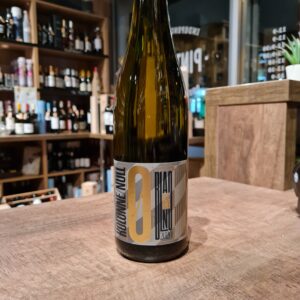 With admirable precision and innovative ideas, the family-run winery Pauly, now in its 3rd generation, succeeds in producing stylish wines with an outstanding character of their own. The winery is not only known for its famous steep slope on the Niederberg-Helden on the Mosel River, but also for the unique slate minerality that gives the wines an elegant, fresh style. The alcohol-free Riesling from Kolonne Null is perfect for all wine enthusiasts who like as little residual sweetness in their wine as possible. Best enjoyed very well chilled at 5 - 7°C. It is perfect as an accompaniment to stir-fried vegetables with fish, omelette with salmon and fennel or vegetable salad with beetroot.
With admirable precision and innovative ideas, the family-run winery Pauly, now in its 3rd generation, succeeds in producing stylish wines with an outstanding character of their own. The winery is not only known for its famous steep slope on the Niederberg-Helden on the Mosel River, but also for the unique slate minerality that gives the wines an elegant, fresh style. The alcohol-free Riesling from Kolonne Null is perfect for all wine enthusiasts who like as little residual sweetness in their wine as possible. Best enjoyed very well chilled at 5 - 7°C. It is perfect as an accompaniment to stir-fried vegetables with fish, omelette with salmon and fennel or vegetable salad with beetroot. -
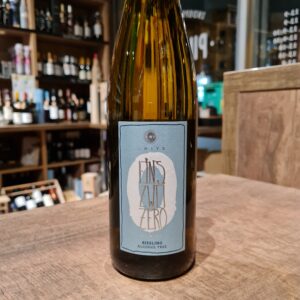 Johannes Leitz continues to innovate! In doing so, he recently partnered with a company to produce two alcohol-free rieslings. Germans have been producing non-alcoholic wines for over 70 years and that history has led to inventions to improve quality. Leitz’s hometown of Rüdesheim is the historic birthplace of the famous distillery Asbach Uralt. After the war, a fellow vigneron named Carl Jung began a distillery. Ultimately, Jung could not compete with the local brandy, but he developed a vacuum distillation system which enabled him to lower the temperature at which alcohol could boil off (because the boiling point decreases as atmospheric pressure decreases). Innovations in vacuum distillation have improved in recent years, and Leitz found a producer in Rheinhessen who recently patented a new, completely closed system that allows wine alcohol to boil at 28°C, preserving “wine-like” aromas and characteristics. As we all know, like fat, alcohol is a transporter of flavor, and without it, there needs to be something else to carry those flavors. 35 grams/L does the work for this riesling, though the sugar is nearly eaten up. Pairs well with gratinated crostini, cauliflower and goat’s cheese & butter, as well as with an Asian chicken casserole.
Johannes Leitz continues to innovate! In doing so, he recently partnered with a company to produce two alcohol-free rieslings. Germans have been producing non-alcoholic wines for over 70 years and that history has led to inventions to improve quality. Leitz’s hometown of Rüdesheim is the historic birthplace of the famous distillery Asbach Uralt. After the war, a fellow vigneron named Carl Jung began a distillery. Ultimately, Jung could not compete with the local brandy, but he developed a vacuum distillation system which enabled him to lower the temperature at which alcohol could boil off (because the boiling point decreases as atmospheric pressure decreases). Innovations in vacuum distillation have improved in recent years, and Leitz found a producer in Rheinhessen who recently patented a new, completely closed system that allows wine alcohol to boil at 28°C, preserving “wine-like” aromas and characteristics. As we all know, like fat, alcohol is a transporter of flavor, and without it, there needs to be something else to carry those flavors. 35 grams/L does the work for this riesling, though the sugar is nearly eaten up. Pairs well with gratinated crostini, cauliflower and goat’s cheese & butter, as well as with an Asian chicken casserole. -
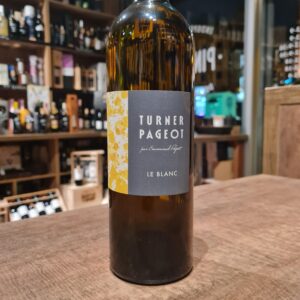 Australian scientist Karen Turner and her husband Emmanuel farm 10 hectares in the Languedoc bring you this incredible intro to orange wine! The 3 grapes here are fermented like a red wine, skins, stalks, and all-- making for white with the tannins and structure of a red. Karen’s says her goal with ‘Le Blanc’ is to bring body and freshness to the wine. The north-facing slopes where their vineyards grow on help to ensure a long and even maturation for the grapes. While Marsanne is not usually an aromatic varietal, Karen’s use of open vats brings out the heady aromas of tangerine and mango. Full-bodied and approachable, it smells like orange rinds and white flowers wilting in the sun, and tastes like yellow peaches, those tangerines and dry, dusty earth, but never loses its identity as a white wine. LADY IN CHARGE: While husband Emmanuel manages the vineyards, the real star is his wife Karen, who makes the wine and also works as the head winemaker and manager of another (very famous) Languedoc winery, Prieuré de Saint Jean de Bébian. Serious girl boss! Decant for 20 minutes before enjoying. It’ll open up and reveal its prettiness with air. Perfect for poultry, fish, cheese and early dishes. Also wonderful in itself.
Australian scientist Karen Turner and her husband Emmanuel farm 10 hectares in the Languedoc bring you this incredible intro to orange wine! The 3 grapes here are fermented like a red wine, skins, stalks, and all-- making for white with the tannins and structure of a red. Karen’s says her goal with ‘Le Blanc’ is to bring body and freshness to the wine. The north-facing slopes where their vineyards grow on help to ensure a long and even maturation for the grapes. While Marsanne is not usually an aromatic varietal, Karen’s use of open vats brings out the heady aromas of tangerine and mango. Full-bodied and approachable, it smells like orange rinds and white flowers wilting in the sun, and tastes like yellow peaches, those tangerines and dry, dusty earth, but never loses its identity as a white wine. LADY IN CHARGE: While husband Emmanuel manages the vineyards, the real star is his wife Karen, who makes the wine and also works as the head winemaker and manager of another (very famous) Languedoc winery, Prieuré de Saint Jean de Bébian. Serious girl boss! Decant for 20 minutes before enjoying. It’ll open up and reveal its prettiness with air. Perfect for poultry, fish, cheese and early dishes. Also wonderful in itself. -
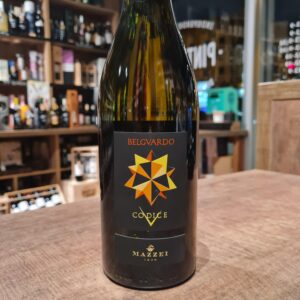 That of the Mazzei is one of the longest and most structured stories that wine Tuscany can give. A story that has as its fulcrum the Chianti Classico and precisely the Castello di Fonterutoli; today a modern cellar with 117 hectares of vineyards for a production of 800,000 bottles. But also a story, made up of great personalities such as, to stay in the near future, Lapo Mazzei, in a period of strong changes, at the same time lays the foundations of today's company. Today, at the helm of this company are the sons Filippi and Francesco who over time have achieved significant goals and given the company a broader scope starting with some acquisitions, even outside Tuscany. In the mid-90s, however, the Belguardo estate project in Maremma was born, with 34 hectares of vineyards. From here comes a non-trivial variation of Vermentino, now it has become the main vine of the Tuscan coast. The white Vermentino "Codice V" of the Belguardo estate of the Mazzei family is a wine born in the heart of the Maremma, on the hills of Grosseto and Montiano. The vines were planted with Vermentino clones originating from Corsica, on loose soils with a predominantly sandy matrix, facing south, south-west. Fermentation takes place in steel tanks at low temperatures and for 20% of the mass in terracotta dolium with maceration on the skins for 4 months. Before final assembly and bottling, the wine rests in steel and terracotta for a few months. on the hills of Grosseto and Montiano. Recommended with fish and white meat savoury dishes, risotto, porcini mushrooms. A tutti!
That of the Mazzei is one of the longest and most structured stories that wine Tuscany can give. A story that has as its fulcrum the Chianti Classico and precisely the Castello di Fonterutoli; today a modern cellar with 117 hectares of vineyards for a production of 800,000 bottles. But also a story, made up of great personalities such as, to stay in the near future, Lapo Mazzei, in a period of strong changes, at the same time lays the foundations of today's company. Today, at the helm of this company are the sons Filippi and Francesco who over time have achieved significant goals and given the company a broader scope starting with some acquisitions, even outside Tuscany. In the mid-90s, however, the Belguardo estate project in Maremma was born, with 34 hectares of vineyards. From here comes a non-trivial variation of Vermentino, now it has become the main vine of the Tuscan coast. The white Vermentino "Codice V" of the Belguardo estate of the Mazzei family is a wine born in the heart of the Maremma, on the hills of Grosseto and Montiano. The vines were planted with Vermentino clones originating from Corsica, on loose soils with a predominantly sandy matrix, facing south, south-west. Fermentation takes place in steel tanks at low temperatures and for 20% of the mass in terracotta dolium with maceration on the skins for 4 months. Before final assembly and bottling, the wine rests in steel and terracotta for a few months. on the hills of Grosseto and Montiano. Recommended with fish and white meat savoury dishes, risotto, porcini mushrooms. A tutti! -
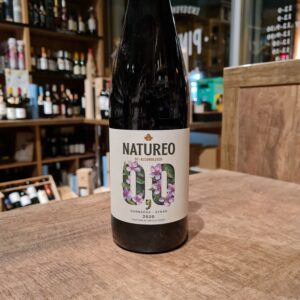 Red wine without alcohol (dealcoholized) made with Grenache and Syrah grapes.5% of the coupage maintains a brief aging in new French oak and subsequently undergoes the dealcoholisation process, maintaining all its aroma and flavour. This non-alcoholic red wine has an intense and delicious flavour. If you are a lover of red wines and want to avoid alcohol, this is a good option. If you do find the fruit coming up too strong, try chilling it to lower that strength. Serve it with pasta, roasts and game dishes
Red wine without alcohol (dealcoholized) made with Grenache and Syrah grapes.5% of the coupage maintains a brief aging in new French oak and subsequently undergoes the dealcoholisation process, maintaining all its aroma and flavour. This non-alcoholic red wine has an intense and delicious flavour. If you are a lover of red wines and want to avoid alcohol, this is a good option. If you do find the fruit coming up too strong, try chilling it to lower that strength. Serve it with pasta, roasts and game dishes -
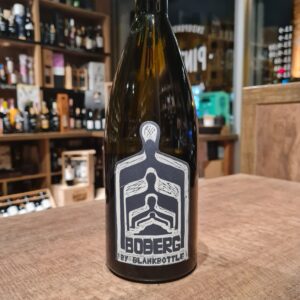 Pieter Walser from Blankbottle has got to be one of the most interesting, inspired, and avant-garde winemakers there is. His wine background mounts to college when he drove past a winery that had bottles with no labels on offer and he could only afford 3 cases. Went back and sold the 3 at a profit. That very moment started a fascinating story that would inspire any of us. As per his own words: “Moment of Silence predominantly comes from a farm in Wellington called Twyfeling. Boberg is situated on a farm right next to Twyfeling and literally looks onto the vineyards of Twyfeling. Now Twyfeling was owned by my direct family seven generations ago. So on the label it shows 7 generations with Boberg overlooking all seven generations of the Hauptfleisch family. 2015 was the first year that I bought the grapes from this Vineyard. The Farmer calls the vineyard BOBERG, which means “on top of the Mountain”. It was a neglected little vineyard, old bush vines with no irrigation. The farmer identified it as a site with potential and started with a restoration process. The vineyard grows in decomposed granitic soil in Wellington. The site is cooler than the others in the area.
Pieter Walser from Blankbottle has got to be one of the most interesting, inspired, and avant-garde winemakers there is. His wine background mounts to college when he drove past a winery that had bottles with no labels on offer and he could only afford 3 cases. Went back and sold the 3 at a profit. That very moment started a fascinating story that would inspire any of us. As per his own words: “Moment of Silence predominantly comes from a farm in Wellington called Twyfeling. Boberg is situated on a farm right next to Twyfeling and literally looks onto the vineyards of Twyfeling. Now Twyfeling was owned by my direct family seven generations ago. So on the label it shows 7 generations with Boberg overlooking all seven generations of the Hauptfleisch family. 2015 was the first year that I bought the grapes from this Vineyard. The Farmer calls the vineyard BOBERG, which means “on top of the Mountain”. It was a neglected little vineyard, old bush vines with no irrigation. The farmer identified it as a site with potential and started with a restoration process. The vineyard grows in decomposed granitic soil in Wellington. The site is cooler than the others in the area. -
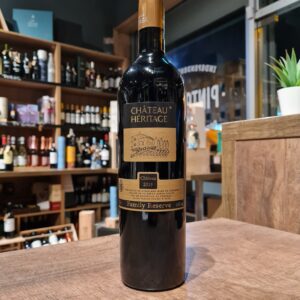 In 1888, the Touma Family established one of the first wineries and distilleries in Lebanon in the small town of Kab-elias of the Bekaa Valley (45 kilometers from Beirut) , to produce wine and Arak Touma, which is now perhaps Lebanon’s leading arak brand. Historically, the settlement goes back to the time of the Phoenicians, but the name was later changed to “Kaber Elias” (tomb of the prophet Elias), as it was believed that the prophet Elias was buried here. The Bible reports of the Prophet’s ascension to heaven in a fiery chariot at the point where John the Baptist is said to have baptized Jesus later, but the tradition of the Elijah tomb has been preserved to this day, not only among Christians, but also among the majority of the Muslim residents. During the Lebanese civil war, many Christians left Kab Elias, as they did elsewhere in Lebanon. The Touma family also had to choose to stay or leave. It was decided to stay and continue to fight and work for a presence of the Christians on the ground. In 1997, an old school building from 1932 was bought and converted into the new winery. The attempt was made to preserve the character of the original architecture in the center of Kab Elias despite all the necessary refurbishment and renovation work and alterations. Bekaa Valley is a 40-mile-long and 7-mile-wide fertile valley which is protected from rain by the Mount Lebanon mountain range to the west, and from the desert heat by the mountains on the Syrian border to the west. It lies around 1,000 metres above sea level allowing for a significant diurnal swing between the hot summer days and cool nights. The treacherous road to Beirut over the top of Mount Lebanon is frequently closed in winter due to snow. The majority of Château Héritage's vines are on the lower south-east facing slopes of Mt Lebanon, just above the winery, which ensures they're well drained with great exposure to sunlight, while being slightly cooler than the valley floor vineyards. The estate’s top wine, from their best parcels of vineyard. FOOD PAIRING: Duck, red meats, and raclette.
In 1888, the Touma Family established one of the first wineries and distilleries in Lebanon in the small town of Kab-elias of the Bekaa Valley (45 kilometers from Beirut) , to produce wine and Arak Touma, which is now perhaps Lebanon’s leading arak brand. Historically, the settlement goes back to the time of the Phoenicians, but the name was later changed to “Kaber Elias” (tomb of the prophet Elias), as it was believed that the prophet Elias was buried here. The Bible reports of the Prophet’s ascension to heaven in a fiery chariot at the point where John the Baptist is said to have baptized Jesus later, but the tradition of the Elijah tomb has been preserved to this day, not only among Christians, but also among the majority of the Muslim residents. During the Lebanese civil war, many Christians left Kab Elias, as they did elsewhere in Lebanon. The Touma family also had to choose to stay or leave. It was decided to stay and continue to fight and work for a presence of the Christians on the ground. In 1997, an old school building from 1932 was bought and converted into the new winery. The attempt was made to preserve the character of the original architecture in the center of Kab Elias despite all the necessary refurbishment and renovation work and alterations. Bekaa Valley is a 40-mile-long and 7-mile-wide fertile valley which is protected from rain by the Mount Lebanon mountain range to the west, and from the desert heat by the mountains on the Syrian border to the west. It lies around 1,000 metres above sea level allowing for a significant diurnal swing between the hot summer days and cool nights. The treacherous road to Beirut over the top of Mount Lebanon is frequently closed in winter due to snow. The majority of Château Héritage's vines are on the lower south-east facing slopes of Mt Lebanon, just above the winery, which ensures they're well drained with great exposure to sunlight, while being slightly cooler than the valley floor vineyards. The estate’s top wine, from their best parcels of vineyard. FOOD PAIRING: Duck, red meats, and raclette. -
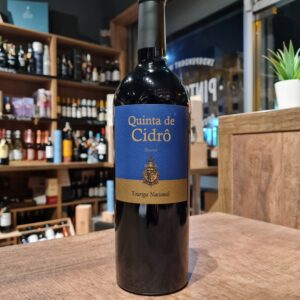 I have been chasing a 100% Touriga Nacional for a while now, with some disappointments in the middle. Mostly due to knowing the full potential of Touriga Nacional and what can be done with it. Was loosing faith(Poor supplier offering in Ireland) and was actively looking to import myself a few options until I stumbled upon this gem. This wine is the example where no one should judge a book by its cover. Across all Companhia Velha Wines the labels are just minimal, classy but not in the way you would think. Has a bit of I don't give a damn about them and that subtlety actually impresses me even further. No distractions to be added here!!! Bear in mind this winery was one of the first if not the first Wine family business(1756) in the Douro Valley(1763) and it was full integrated when it became the first official wine region in the world. Quinta de Cidrô is located at São João da Pesqueira, which is one of the most highly regarded areas of Douro Valley. Throughout the last 20 years, Cidrô has been transformed into an experimental-model vineyard for the entire region. In virgin soils, cutting edge techniques were employed to plant 150 ha of the best varieties, creating one of the largest surfaces of single vineyard in the entire Douro Region. In the most privileged location, international varieties perform equally well as the local grapes. Chardonnay, Sauvignon Blanc, Viognier, Pinot Noir, and the adaptable Cabernet Sauvignon are some of the foreign varieties that here express their best qualities when vinified by the extensive winemaking know-how present at the Company. Touriga Nacional is Portugal’s star variety and the dominant red grape at Quinta de Cidrô. The altitude of this Quinta provides excellent freshness and levels of acidity, ideal conditions for an elegant red wine. Touriga Nacional is a versatile grape, with its main characteristics being the small bundle, its low yield and jagged leaf. Its presence in the vines is intimidating, as it requires a constant care for its wild and rebellious character of growing disorderly. At Quinta de Cidrô, Touriga Nacional was adapted to a less habitual place, as it was mostly planted in low altitude vineyards and subject to high temperatures; the opposite of Quinta de Cidrô. Personally I love it on its own with at least 45 minutes decanting or enjoy really slow the very first drop. Winemakers suggestion for this stunning wine are: Rump Steak, Pork Leg, Parmigiano Cheese and Dark Chocolate.
I have been chasing a 100% Touriga Nacional for a while now, with some disappointments in the middle. Mostly due to knowing the full potential of Touriga Nacional and what can be done with it. Was loosing faith(Poor supplier offering in Ireland) and was actively looking to import myself a few options until I stumbled upon this gem. This wine is the example where no one should judge a book by its cover. Across all Companhia Velha Wines the labels are just minimal, classy but not in the way you would think. Has a bit of I don't give a damn about them and that subtlety actually impresses me even further. No distractions to be added here!!! Bear in mind this winery was one of the first if not the first Wine family business(1756) in the Douro Valley(1763) and it was full integrated when it became the first official wine region in the world. Quinta de Cidrô is located at São João da Pesqueira, which is one of the most highly regarded areas of Douro Valley. Throughout the last 20 years, Cidrô has been transformed into an experimental-model vineyard for the entire region. In virgin soils, cutting edge techniques were employed to plant 150 ha of the best varieties, creating one of the largest surfaces of single vineyard in the entire Douro Region. In the most privileged location, international varieties perform equally well as the local grapes. Chardonnay, Sauvignon Blanc, Viognier, Pinot Noir, and the adaptable Cabernet Sauvignon are some of the foreign varieties that here express their best qualities when vinified by the extensive winemaking know-how present at the Company. Touriga Nacional is Portugal’s star variety and the dominant red grape at Quinta de Cidrô. The altitude of this Quinta provides excellent freshness and levels of acidity, ideal conditions for an elegant red wine. Touriga Nacional is a versatile grape, with its main characteristics being the small bundle, its low yield and jagged leaf. Its presence in the vines is intimidating, as it requires a constant care for its wild and rebellious character of growing disorderly. At Quinta de Cidrô, Touriga Nacional was adapted to a less habitual place, as it was mostly planted in low altitude vineyards and subject to high temperatures; the opposite of Quinta de Cidrô. Personally I love it on its own with at least 45 minutes decanting or enjoy really slow the very first drop. Winemakers suggestion for this stunning wine are: Rump Steak, Pork Leg, Parmigiano Cheese and Dark Chocolate. -
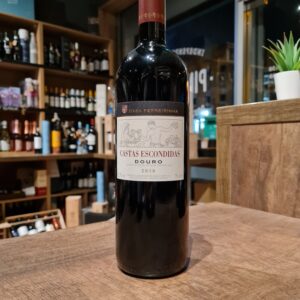 Is with wines like this one that you start uncovering the great potential of Douro wines. 'Castas Escondidas' translates as 'hidden varieties' and showcases old-vines, field-blend fruit and some of the lesser known grape varieties of the Douro Valley. What makes this drop a superior wine is not only the great quality of the terroir, region characteristics, the field blend vines used but most importantly the high intervention from skilled winemakers producing this wine. With all of these movements happening which by all means are fantastic such as natural wines, low intervention and so on, memories can be short and people will have some tendency to forget that winemakers spent hundreds of years studying the production of wine going by the scientific name of oenology and therefore they are oenologists with the main purpose being interventionists in every single process of the wine production!!! oh dear, I feel I am opening a can of worms here... As the magician himself describes “Casa Ferreirinha Castas Escondidas was designed to stage the varieties commonly used in batches of Port Wine, but rarely explored and which result in a perfect combination with other more well-known varieties” , says Luís Sottomayor, the winemaker responsible for Sogrape wines in the Douro. . “The small percentage of grapes harvested from old vines gives even more special characteristics to the final batch” Great with for special occasions, quality red meats and cheeses. Be responsible and drink this wine moderately as it is one of a kind
Is with wines like this one that you start uncovering the great potential of Douro wines. 'Castas Escondidas' translates as 'hidden varieties' and showcases old-vines, field-blend fruit and some of the lesser known grape varieties of the Douro Valley. What makes this drop a superior wine is not only the great quality of the terroir, region characteristics, the field blend vines used but most importantly the high intervention from skilled winemakers producing this wine. With all of these movements happening which by all means are fantastic such as natural wines, low intervention and so on, memories can be short and people will have some tendency to forget that winemakers spent hundreds of years studying the production of wine going by the scientific name of oenology and therefore they are oenologists with the main purpose being interventionists in every single process of the wine production!!! oh dear, I feel I am opening a can of worms here... As the magician himself describes “Casa Ferreirinha Castas Escondidas was designed to stage the varieties commonly used in batches of Port Wine, but rarely explored and which result in a perfect combination with other more well-known varieties” , says Luís Sottomayor, the winemaker responsible for Sogrape wines in the Douro. . “The small percentage of grapes harvested from old vines gives even more special characteristics to the final batch” Great with for special occasions, quality red meats and cheeses. Be responsible and drink this wine moderately as it is one of a kind -
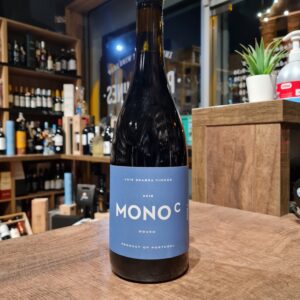 Luis Seabra is a producer that is at the forefront of the “new Douro” movement. Rather than making table wines that are, for all intents and purposes, “Little Ports,” Luis has taken a more balanced, restrained approach to winemaking in the oldest demarcated wine region in the world. His guiding principles are showcasing terroir and nuance above power and extraction. Bright, mineral driven and elegant, Luis’ wines are typically exposés of soil type. With the Mono C, he is taking a look at a particular variety – in this case, Castelão. While Castelão is a grape that is typically found further south in Portugal, Luis has found a mono-planted plot of the light-skinned grape in the Douro and is working his magic to craft a wine of unparalleled delicacy and elegance. Would pair it with charcuterie, grilled pork dishes, roasted poultry
Luis Seabra is a producer that is at the forefront of the “new Douro” movement. Rather than making table wines that are, for all intents and purposes, “Little Ports,” Luis has taken a more balanced, restrained approach to winemaking in the oldest demarcated wine region in the world. His guiding principles are showcasing terroir and nuance above power and extraction. Bright, mineral driven and elegant, Luis’ wines are typically exposés of soil type. With the Mono C, he is taking a look at a particular variety – in this case, Castelão. While Castelão is a grape that is typically found further south in Portugal, Luis has found a mono-planted plot of the light-skinned grape in the Douro and is working his magic to craft a wine of unparalleled delicacy and elegance. Would pair it with charcuterie, grilled pork dishes, roasted poultry -
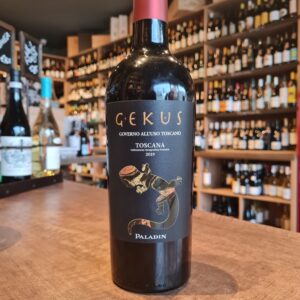 There are many ways in which to fall in love with Tuscany, not the least of which is through the region’s wonderful wines—or its landscape, its people, its food, and its art. Paladin's example of Super Tuscan wines comes in this form. A local take on the classic Bordeaux-style blend of Cabernet Sauvignon, Merlot, and Syrah (and sometimes Cabernet Franc), these wines were developed, in part, as a reaction to the restrictive regulations in Tuscany during the 1970s. At the time they emerged, they were considered some of the region’s best reds. Yet, somewhat ironically, they were technically table wine. In 1994, their Vino da Tavola (VdT) status was elevated to the Indicazione Geografica Tipica (IGT) denomination, which officially endowed these non-traditional wines with a premium quality rating just below the Denominazione di Origine Controllata (DOC), which at that time was reserved for more traditional regional wines. The tonneau used at Paladin hold 2 to 3,000 litters. Very impressive if you compare the barrels with a normal barrique barrel. Even though Gekus is only aged for 3 months, the body that it has is quite pronounced and it is indicative of the extraction done with the grapes. The bottle itself already shows through its weight that we are about to encounter something phenomenal, something heavy, something Super. The palate is complex and you can feel the residual sugar without it being sweet to a point of being unpleasant. Recommended with red meat, it is traditionally very popular with pici (thick spaghetti) with meat sauce. Serve at room temperature.
There are many ways in which to fall in love with Tuscany, not the least of which is through the region’s wonderful wines—or its landscape, its people, its food, and its art. Paladin's example of Super Tuscan wines comes in this form. A local take on the classic Bordeaux-style blend of Cabernet Sauvignon, Merlot, and Syrah (and sometimes Cabernet Franc), these wines were developed, in part, as a reaction to the restrictive regulations in Tuscany during the 1970s. At the time they emerged, they were considered some of the region’s best reds. Yet, somewhat ironically, they were technically table wine. In 1994, their Vino da Tavola (VdT) status was elevated to the Indicazione Geografica Tipica (IGT) denomination, which officially endowed these non-traditional wines with a premium quality rating just below the Denominazione di Origine Controllata (DOC), which at that time was reserved for more traditional regional wines. The tonneau used at Paladin hold 2 to 3,000 litters. Very impressive if you compare the barrels with a normal barrique barrel. Even though Gekus is only aged for 3 months, the body that it has is quite pronounced and it is indicative of the extraction done with the grapes. The bottle itself already shows through its weight that we are about to encounter something phenomenal, something heavy, something Super. The palate is complex and you can feel the residual sugar without it being sweet to a point of being unpleasant. Recommended with red meat, it is traditionally very popular with pici (thick spaghetti) with meat sauce. Serve at room temperature. -
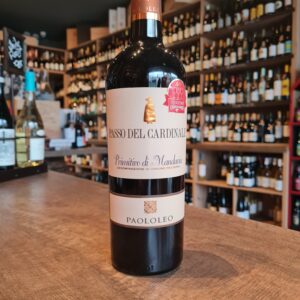 The Primitivo Paolo Leo Pass of the Cardinal is an ancient grape grape cultivated in Apulia, whose grapes present a very early maturation in comparison to other varieties, the name of which explains. One of the most interesting particularities of the Primitivo is the fact that, at a distance of only 20 days from the harvest, these grape vines are able to give a discreet second production of grapes. Traditionally, the fruits of this "second harvest" are used to increase the freshness of these ponderous wines, improving the deimosti acidity obtained from the first harvesting. The great body of the Primitivo di Manduria di Passo del Cardinale is able to enhance fine meats with a rigorous structure. Sliced beef and grilled steaks are the backdrop for a panoramic photograph. A touch of Puglia with orecchiette with chops sauce can be a gastronomic journey with which you can surprise your guests.
The Primitivo Paolo Leo Pass of the Cardinal is an ancient grape grape cultivated in Apulia, whose grapes present a very early maturation in comparison to other varieties, the name of which explains. One of the most interesting particularities of the Primitivo is the fact that, at a distance of only 20 days from the harvest, these grape vines are able to give a discreet second production of grapes. Traditionally, the fruits of this "second harvest" are used to increase the freshness of these ponderous wines, improving the deimosti acidity obtained from the first harvesting. The great body of the Primitivo di Manduria di Passo del Cardinale is able to enhance fine meats with a rigorous structure. Sliced beef and grilled steaks are the backdrop for a panoramic photograph. A touch of Puglia with orecchiette with chops sauce can be a gastronomic journey with which you can surprise your guests. -
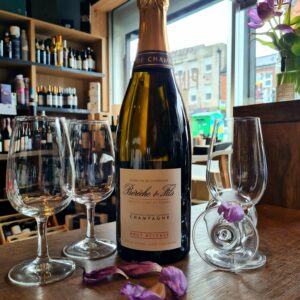 In one of mine first wine classes, the teacher said regarding pairing wines with meals. ''You can attempt everything, and please please do so, but don't matter what you will try, you will see that there is only one type of wine that will pair beautifully with all the meals throughout the day. that wine is Champagne!''. Oh dear was he right...Pair this one with a lovely cooked breakfast and you in for a treat. As for the background of this wine: Raphaël and Vincent Bérêche, two of Champagne’s rising stars, have been working alongside their father Jean-Pierre at their nine-hectare estate of Bérêche et Fils since 2004, and today they are putting an increasingly personal stamp on this thoughtfully-run Domaine. The Bérêche estate owns vines in several different sectors of Champagne, with the three primary areas being the immediate vicinity around Ludes and Craon de Ludes, the gravelly terroir of Ormes in the Petite Montagne, and the area around Mareuil-le-Port, on the left bank of the Vallée de la Marne. A small parcel is also found in Trépail, in the eastern Montagne de Reims. Most recently, the estate has acquired its first grand cru vineyard in 2012, a tiny, 15-are parcel in the village of Mailly. The estate's vineyards are planted with roughly equal parts of the three varieties, and increasing attention is being paid to natural viticulture—Bérêche completely stopped using chemical herbicides in 2004 and has planted cover crops in all of the vineyards, and since 2007 a portion of the vineyard is being converted to biodynamics. Sharp-eyed observers will note that beginning in 2013, Bérêche has changed its status from RM (récoltant-manipulant) to NM (négociant-manipulant). This was done for two reasons: the first was to augment the production of the Brut Réserve by about 15 to 20 percent, selecting grapes from three trusted growers in the villages of Ludes, Maily and Rilly-la-Montagne. These grapes will be used exclusively for the Brut Réserve, and the rest of Bérêche's wines remain entirely estate-grown. The second reason was the creation of a négociant range called Crus Sélectionnés, released under the label Raphaël et Vincent Bérêche. These are wines selected from various sources across the Champagne region, designed to illustrate and reflect their respective terroirs, with the first series of wines to be released in 2014. At Bérêche, vinification tends towards the traditional: parcels are vinified separately, with natural yeasts used for smaller tanks and selected yeasts for larger ones. The family has slowly been increasing the percentage of oak used in the cellar, and today about three-quarters of the production is vinified in barrel. The malolactic is systematically avoided, and the wines are bottled around May, without filtration and with a natural cold-settling, achieved by opening all of the cellar’s windows and waiting for three days. Disgorging is still done entirely by hand, and unlike many growers who are embracing the idea of concentrated must for the dosage, Bérèche adamantly prefers a traditional liqueur. Recently the Bérêches have begun to work more with cork for the second fermentation, believing that it results in a wine of more character and complexity. Raphaël’s father was always a firm believer in cork, but it requires a lot of extra work—now that Raphaël and Vincent are working with him at the estate, it’s easier to accomplish. Today, a quarter of the production is bottled with cork instead of capsule, spread over five different cuvées: Les Beaux Regards, Vallée de la Marne Rive Gauche, Le Cran, Reflet d'Antan and the Campania Remensis rosé. Pair it with: Oysters, Grilled fish, Salads, Cheeses, Starters & Canapes
In one of mine first wine classes, the teacher said regarding pairing wines with meals. ''You can attempt everything, and please please do so, but don't matter what you will try, you will see that there is only one type of wine that will pair beautifully with all the meals throughout the day. that wine is Champagne!''. Oh dear was he right...Pair this one with a lovely cooked breakfast and you in for a treat. As for the background of this wine: Raphaël and Vincent Bérêche, two of Champagne’s rising stars, have been working alongside their father Jean-Pierre at their nine-hectare estate of Bérêche et Fils since 2004, and today they are putting an increasingly personal stamp on this thoughtfully-run Domaine. The Bérêche estate owns vines in several different sectors of Champagne, with the three primary areas being the immediate vicinity around Ludes and Craon de Ludes, the gravelly terroir of Ormes in the Petite Montagne, and the area around Mareuil-le-Port, on the left bank of the Vallée de la Marne. A small parcel is also found in Trépail, in the eastern Montagne de Reims. Most recently, the estate has acquired its first grand cru vineyard in 2012, a tiny, 15-are parcel in the village of Mailly. The estate's vineyards are planted with roughly equal parts of the three varieties, and increasing attention is being paid to natural viticulture—Bérêche completely stopped using chemical herbicides in 2004 and has planted cover crops in all of the vineyards, and since 2007 a portion of the vineyard is being converted to biodynamics. Sharp-eyed observers will note that beginning in 2013, Bérêche has changed its status from RM (récoltant-manipulant) to NM (négociant-manipulant). This was done for two reasons: the first was to augment the production of the Brut Réserve by about 15 to 20 percent, selecting grapes from three trusted growers in the villages of Ludes, Maily and Rilly-la-Montagne. These grapes will be used exclusively for the Brut Réserve, and the rest of Bérêche's wines remain entirely estate-grown. The second reason was the creation of a négociant range called Crus Sélectionnés, released under the label Raphaël et Vincent Bérêche. These are wines selected from various sources across the Champagne region, designed to illustrate and reflect their respective terroirs, with the first series of wines to be released in 2014. At Bérêche, vinification tends towards the traditional: parcels are vinified separately, with natural yeasts used for smaller tanks and selected yeasts for larger ones. The family has slowly been increasing the percentage of oak used in the cellar, and today about three-quarters of the production is vinified in barrel. The malolactic is systematically avoided, and the wines are bottled around May, without filtration and with a natural cold-settling, achieved by opening all of the cellar’s windows and waiting for three days. Disgorging is still done entirely by hand, and unlike many growers who are embracing the idea of concentrated must for the dosage, Bérèche adamantly prefers a traditional liqueur. Recently the Bérêches have begun to work more with cork for the second fermentation, believing that it results in a wine of more character and complexity. Raphaël’s father was always a firm believer in cork, but it requires a lot of extra work—now that Raphaël and Vincent are working with him at the estate, it’s easier to accomplish. Today, a quarter of the production is bottled with cork instead of capsule, spread over five different cuvées: Les Beaux Regards, Vallée de la Marne Rive Gauche, Le Cran, Reflet d'Antan and the Campania Remensis rosé. Pair it with: Oysters, Grilled fish, Salads, Cheeses, Starters & Canapes -
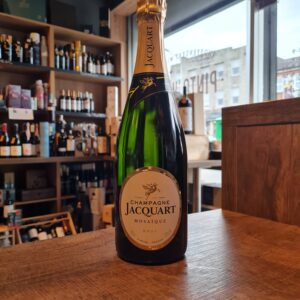 The vineyards cultivated by Jacquart winemakers cover 2,400 ha spread over sixty crus, that is to say, sixty villages throughout the Champagne area – what a mosaic! It’s within this large range of sites in Champagne that their winemaker draws together the different shades through careful assemblage, creating a cuvée that is ethereal and which seduces lovers of JACQUART. Brut Mosaïque is a wine for all times, sharing the pleasures of daily life, celebrating good news, and friends that pop round unexpectedly – this is the champagne you always have in the fridge. «Our Brut Mosaïque elegantly shows the uniqueness of our style, expressing the result of selection and choices without compromise.» Floriane Eznack THE FACTS A blend where Chardonnay is the dominant grape variety (35%-40%), giving Brut Mosaïque its freshness and delicate aromas. Pinot Noir (30%-35%) adds structure and Pinot Meunier (25% -30%) brings fruit.The grapes are sourced from exceptional terroirs, including the Grands Crus of the Côte des Blancs and the Montagne de Reims. The presence of 25% reserve wine ensures regularity of style, while more than three years ageing and a light dosage of 10 g/l result in a balanced and complex champagne. There is a time and place for this bubbly and that is anytime and everywhere! Day or night, as an aperitif or with fish or cheese. For a special occasion or for sharing with friends, Brut Mosaïque makes the moment.
The vineyards cultivated by Jacquart winemakers cover 2,400 ha spread over sixty crus, that is to say, sixty villages throughout the Champagne area – what a mosaic! It’s within this large range of sites in Champagne that their winemaker draws together the different shades through careful assemblage, creating a cuvée that is ethereal and which seduces lovers of JACQUART. Brut Mosaïque is a wine for all times, sharing the pleasures of daily life, celebrating good news, and friends that pop round unexpectedly – this is the champagne you always have in the fridge. «Our Brut Mosaïque elegantly shows the uniqueness of our style, expressing the result of selection and choices without compromise.» Floriane Eznack THE FACTS A blend where Chardonnay is the dominant grape variety (35%-40%), giving Brut Mosaïque its freshness and delicate aromas. Pinot Noir (30%-35%) adds structure and Pinot Meunier (25% -30%) brings fruit.The grapes are sourced from exceptional terroirs, including the Grands Crus of the Côte des Blancs and the Montagne de Reims. The presence of 25% reserve wine ensures regularity of style, while more than three years ageing and a light dosage of 10 g/l result in a balanced and complex champagne. There is a time and place for this bubbly and that is anytime and everywhere! Day or night, as an aperitif or with fish or cheese. For a special occasion or for sharing with friends, Brut Mosaïque makes the moment.


